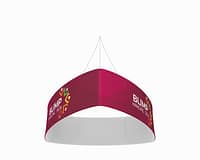In the dynamic realm of outdoor exhibitions, the shift towards creating compelling, immersive experiences has never been more significant. As organizations strive to captivate audiences amidst nature’s backdrop, the integration of innovative displays becomes essential. One such innovation making waves in this space is the case-to-counter—an elevated display solution that marries aesthetics with functionality. This article explores how case-to-counters are transforming exhibition spaces and enhancing audience engagement through thoughtful design.
Transforming Spaces: The Role of Case-to-Counters in Exhibitions
The landscape of outdoor exhibitions has evolved dramatically, necessitating the need for versatile display solutions that can adapt to varying environments. Case-to-counters serve as a bridge between traditional exhibition formats and the organic elements of the outdoors. With their ability to function as both protective enclosures and interactive engagement points, these structures redefine how exhibitors present their narratives. Crafted from weather-resistant materials, they stand resilient against the elements, enabling organizations to showcase their content without compromise.
Case-to-counters also promote spatial efficiency. Exhibitors can maximize their footprint by using case-to-counters to delineate spaces for interaction, product display, and informational dialogue. This versatility allows for a streamlined layout that encourages foot traffic and fosters organic engagement among visitors. By transforming spaces into structured yet inviting environments, case-to-counters help create a flow that keeps audiences intrigued and informed.
Furthermore, the aesthetic appeal of case-to-counters cannot be overlooked. With customizable designs and finishes, these structures can seamlessly integrate with the natural surroundings, enhancing the overall ambiance of the exhibition. Whether it’s a sleek modern design or a rustic wooden finish, a well-chosen case-to-counter can elevate the visual narrative of an exhibit, drawing visitors in and piquing their interest. In this way, they not only transform the physical space but also contribute to the story being told.
Engaging Audiences: Elevating Experiences Through Design
The design of case-to-counters plays a pivotal role in audience engagement. With a focus on user interaction, these counters can be designed to include interactive screens, product samples, and even augmented reality elements that invite visitors to delve deeper into the content. This interactivity enriches the visitor experience, fostering a sense of connection and involvement that passive displays simply cannot achieve. As audiences become more active participants, their retention of information and emotional investment in the experience increase significantly.
Moreover, the strategic placement of case-to-counters can guide audience flow and interaction. By situating these displays at key points throughout the exhibition space, organizers can direct visitor attention to specific messages or products. This intentional layout not only enhances engagement but also cultivates an exploratory atmosphere where visitors feel encouraged to linger and learn. The result is a captivating experience that leaves a lasting impression, encouraging attendees to share their experiences and broaden the reach of the exhibition through word-of-mouth.
Lastly, the incorporation of storytelling within the design of case-to-counters enriches the audience’s understanding of the subject matter. By integrating graphics, multimedia, and tactile experiences, exhibitors can craft a narrative that resonates on multiple levels. This multifaceted approach allows for a deeper emotional connection, transforming a simple exhibition into an unforgettable journey. Audiences become invested not just in the content but also in the experience, which can lead to increased engagement, participation, and even advocacy long after the exhibition concludes.
In summary, the impact of case-to-counters in outdoor exhibitions cannot be overstated. They serve as transformative elements that enhance spatial dynamics, foster engagement, and elevate the overall experience for visitors. As organizations continue to seek innovative ways to connect with their audiences, the integration of case-to-counters stands out as a powerful strategy. By embracing this design-forward approach, exhibitors can create captivating, memorable experiences that resonate with visitors, ensuring the success of their outdoor exhibitions in an increasingly competitive landscape.




